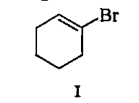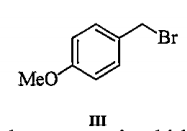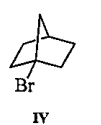Predict the compound which will undergo solvolysis (aqueous ethanol) more rapidly.
CH3−(CH2)2−CH−Cl
H3C−Cl∣C∣CH3−CH3
H5C6−Cl∣C∣CH3−CH3
H3C−CH2−Cl∣CH−CH3
The correct Answer is:C
To predict which compound will undergo solvolysis more rapidly in aqueous ethanol, we need to analyze the stability of the carbocations formed during the reaction. The solvolysis reaction follows an SN1 mechanism, which involves two main steps: the formation of a carbocation and the subsequent nucleophilic attack by the solvent (ethanol in this case).
1. Identify the Compounds:
Let's assume we have two alkyl halides to compare, for example, 1-bromopropane (R-CH2-CH2-CH2-Br) and tert-butyl bromide (R-C(CH3)3-Br).
2. Understand the SN1 Mechanism:
The SN1 mechanism involves two steps:
- Step 1: Formation of a carbocation by the departure of the leaving group (Br in this case).
- Step 2: Nucleophilic attack by the solvent (ethanol).
3. Carbocation Stability:
The rate of solvolysis is primarily determined by the stability of the carbocation formed in the first step. The more stable the carbocation, the faster the reaction will proceed. Carbocation stability increases in the following order:
- Methyl < Primary < Secondary < Tertiary
- Additionally, resonance can stabilize carbocations significantly.
4. Analyze the Carbocations:
- For 1-bromopropane, the carbocation formed is a primary carbocation (R-CH2-CH2-CH2^+), which is relatively unstable.
- For tert-butyl bromide, the carbocation formed is a tertiary carbocation (R-C^+(CH3)3), which is much more stable due to hyperconjugation and inductive effects from the three methyl groups.
5. Conclusion:
Since tert-butyl bromide forms a more stable carbocation compared to 1-bromopropane, it will undergo solvolysis more rapidly in aqueous ethanol.
Final Answer:
Tert-butyl bromide will undergo solvolysis more rapidly than 1-bromopropane due to the formation of a more stable tertiary carbocation.
Let's assume we have two alkyl halides to compare, for example, 1-bromopropane (R-CH2-CH2-CH2-Br) and tert-butyl bromide (R-C(CH3)3-Br).
The SN1 mechanism involves two steps:
- Step 1: Formation of a carbocation by the departure of the leaving group (Br in this case).
- Step 2: Nucleophilic attack by the solvent (ethanol).
The rate of solvolysis is primarily determined by the stability of the carbocation formed in the first step. The more stable the carbocation, the faster the reaction will proceed. Carbocation stability increases in the following order:
- Methyl < Primary < Secondary < Tertiary
- Additionally, resonance can stabilize carbocations significantly.
- For 1-bromopropane, the carbocation formed is a primary carbocation (R-CH2-CH2-CH2^+), which is relatively unstable.
- For tert-butyl bromide, the carbocation formed is a tertiary carbocation (R-C^+(CH3)3), which is much more stable due to hyperconjugation and inductive effects from the three methyl groups.
Since tert-butyl bromide forms a more stable carbocation compared to 1-bromopropane, it will undergo solvolysis more rapidly in aqueous ethanol.
Tert-butyl bromide will undergo solvolysis more rapidly than 1-bromopropane due to the formation of a more stable tertiary carbocation.
Topper's Solved these Questions
- ALKYL AND ARYL HALIDESBook:FIITJEEChapter:ALKYL AND ARYL HALIDESExercise:ASSIGNMNET PROBLEMS [OBJECTIVE] <br> LEVEL-II
Explore 20 Videos
- ALKYL AND ARYL HALIDESBook:FIITJEEChapter:ALKYL AND ARYL HALIDESExercise:COMPREHENSION-I
Explore 3 Videos
- ALKYL AND ARYL HALIDESBook:FIITJEEChapter:ALKYL AND ARYL HALIDESExercise:ASSIGNMNET PROBLEMS [SUBJECTIVE] <br> LEVEL-II
Explore 4 Videos
- ALDEHYDES AND KETONES Book:FIITJEEChapter:ALDEHYDES AND KETONES Exercise:MATCHING LIST QUESTIONS
Explore 2 Videos
- ATOMIC STRUCTUREBook:FIITJEEChapter:ATOMIC STRUCTUREExercise:NUMERICAL BASED QUESTIONS INDICATED BY DIGITAL INTEGER BY XXXXX.XX
Explore 2 Videos
Similar Questions
Observe the following compounds and answer the questions given below.

Which of these compounds will undergo aqueous alkaline hydrolysis readily?
Write the reaction in support of your answer.
View SolutionAmong the following



 the compounds which can undergo an SN1 reaction in an aqueous solution, are
the compounds which can undergo an SN1 reaction in an aqueous solution, are
View Solution
Knowledge Check
Predict the compound which will undergo SN2 reaction faster:
ACH3−CH2−CH2−ClBH3C−Cl∣C−CH3CCH3−CH2−CH2−lDH3C−l∣CH−CH3Which compound does not undergo hydrolysis?
ASF6BSF4CSOCl2DSO2Cl2The compound which readily undergoes decaroxylation is
AHOOC−CH2−COOHBC6H5−COOHCHOOC−(CH2)4−COOHDCH2−CH2−CH2−COOH
The compound which does not undergo hydrolysis at room temperature is :
View SolutionThe compounds which do not undergo hydrolysis at room temperature are:
View SolutionWhich of the following undergoes faster solvolysis ?
View SolutionThe compound which undergoes dehydration very easily is :
View SolutionThe compound which undergoes dehydration very easily is :
View Solution